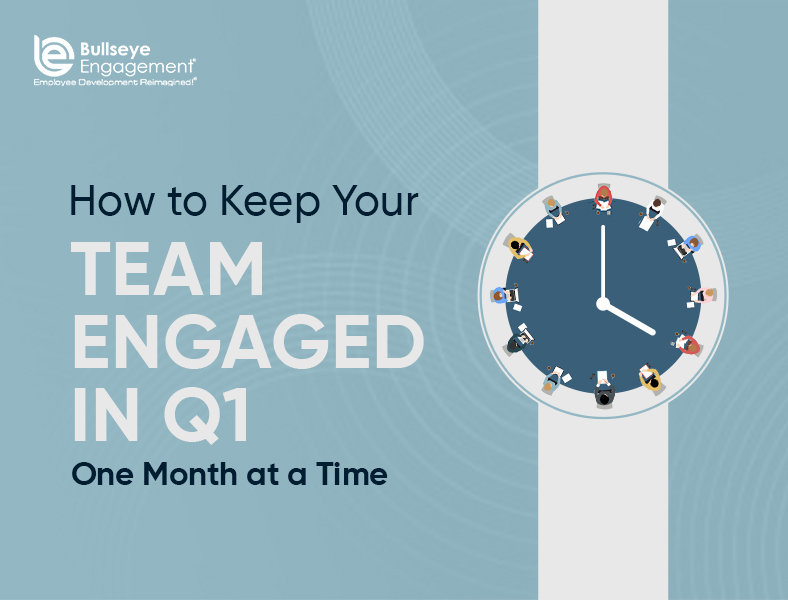Companies that invest in employee experience outperform those that don’t. Companies with great employee experiences have lower turnover, better customer experience, higher engagement, greater revenue, and more profits. But if you’re reading this, you probably already know how important EX is.
Naturally, improvements to employee experience cannot be created unless an organization knows its employees. A well-designed and conducted employee experience survey is a great method to uncover valuable information that leaders can use to make changes within the organization.
It is important to survey workers on a regular basis to show employees that their company truly cares about their experiences, especially during these unprecedented times.
Take a look at the moments that matter
In the “pre-coronavirus” world, wellbeing, engagement, personal support, and leadership development were the focus of employee experience initiatives for most organizations. Now EX has evolved to include items that touch on employees’ safety and psychological needs such as daily productivity, sanitation, and flexible workspaces.
The pandemic may have redefined the meaning of employee experience, but fundamentally EX is still about the day-to-day experiences an organization provides to its employees. Even the little things can bog employees down and damage their overall experience at work. Brainstorm and research issues that make a big impact on the employee experience in your organization, then structure your survey around these items.
Consider asking for feedback on each employee’s perceptions of items such as:
- Ease of use of technology
- This includes everything from computers, to video conferencing solutions, phone systems, and even the internal social network employees have access to. It also includes any learning management system, software, and apps. Does technology employees use daily improve or hinder productivity? Are the systems in place effective for collaborative work?
- Physical environment
- Do employees feel comfortable in their workspace? Does the space drain or energize them? Do employees feel empowered to pick an environment based on the work they are doing? If remote work is the norm do employees receive adequate home office stipends to customize their space? What are your employees’ attitudes toward returning to work?
- Culture
- Do current systems promote collaboration and communication? Do employees feel they can easily communicate transparently with leaders? Is there a culture of recognition in the workplace? Is the environment inclusive and diverse? How do employees like to be recognized for their work, and how often?
It is still critical to gather data about the end-to-end hire to retire experience
Consider other items that impact an employee’s experience as they grow and develop within the organization. These touchpoints will affect your workers’ perceptions of the organization long after the pandemic ends, so it is important to take them into account.
- Onboarding
- How effectively do managers set 30-, 60- and 90-day expectations for new hires? In what ways can you better engage new hires remotely?
- Meaningful Work
- Do employees have autonomy over aspects of their job? Do employees understand how their daily work connects to the company mission? Does the organization utilize small, empowered teams?
- Growth Opportunities
- Do employees receive adequate support and training on the job? Is self-directed, dynamic learning possible? Is talent mobility facilitated?
- Supportive Management
- Do managers set clear and transparent goals? Are mentors or coaches readily available?
More Ideas
There is no one-size-fits-all survey, and a large portion of the questions you ask will vary depending on your organization. If you get stuck, here are a few ideas for survey questions that provide an understanding of the degree to which employees feel valued but also productive and satisfied in their roles (via Forbes):
- Will You Still Work Here In 12 Months?
- Do You Feel That Your Voice Is Heard?
- Would You Recommend Your Friends Work Here?
- Do You Get What You Need to Get Your Job Done?
Keep in Mind
Be mindful of the timing, method, and format of your survey to ensure it produces valid results.
- How you send surveys matters
- Choose a channel or platform that is easy for employees to access. For most organizations, digital surveys are optimal. An organization in an industry like manufacturing or retail with many workers on a shop floor or factory should ensure the survey is accessible via mobile device.
- When you send surveys matters
- Avoid peak holiday seasons and cycles that could skew the results positivity or negatively (e.g., bonus season, high-stress periods). Make sure employees have adequate time to devote to the survey. Depending on how an organization structures its business planning, it is useful to schedule surveys appropriately, so results are available to inform budgets and strategy.
- Ensure anonymity and confidentiality of responses
- Make it clear that survey responses will not be traced back to the employee. This ensures employees are comfortable sharing their true perspective and improves the validity of survey results.
Final Notes
Keep in mind the saying, “Don’t ask a question if you’re not prepared to hear the answer.”
If your organization is not ready to act on feedback it receives, do not bother wasting time with surveys. When a management team is not committed to fully listen and act on what employees communicate, conducting surveys can raise false expectations for workers and ultimately hurt both morale and engagement.
Be sure to communicate a plan to address employee concerns and continue to solicit feedback as you implement new initiatives. Although this is certainly a stressful time for many, it’s still possible to cultivate a flexible, collaborative, and humanistic experience for your employees.

















